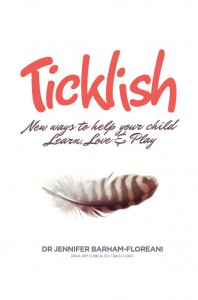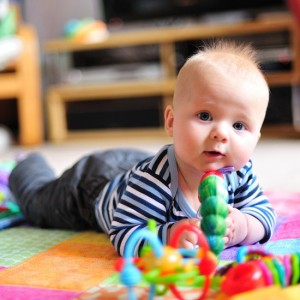 Many of us live busy, goal-oriented lives in which we race about, eager to achieve quick results and succeed in all manner of tasks, great or small. This cultural tendency permeates everything we do, even our nurturing. As parents, we may be eager for our children to achieve, and even when they are babies, we are encouraged to watch them closely, ticking the boxes of optimal development as they grow…
Many of us live busy, goal-oriented lives in which we race about, eager to achieve quick results and succeed in all manner of tasks, great or small. This cultural tendency permeates everything we do, even our nurturing. As parents, we may be eager for our children to achieve, and even when they are babies, we are encouraged to watch them closely, ticking the boxes of optimal development as they grow…
Panic may set in at the first sign of inadequacy, but although fears relating to autism and learning disabilities are sometimes well warranted, in most cases a child that learns to walk first is not necessarily Einstein-in-the-making, nor is the child who crawls last destined to be Homer Simpson. All children are different, they progress at individual rates, and neurological development naturally ebbs and flows.
While it is certainly useful for parents to have an understanding of developmental milestones, it is better again for them to:
• Learn how to enrich their child’s environment
• Appreciate which lifestyle factors may dampen their child’s capacity to grow.
Did you know that babies have far more brain cells than adults? When a baby is born their brain has more neurons (specialised cell-transmitting nerve messages) than it will ever have later in life, giving the child an enormous capacity to learn and thrive. It is a baby’s environment that creates the stimulus to get these neurons firing and wiring; i.e. the environment primes the brain.
So what can you as a parent do to ensure you’re encouraging healthy brain development? Below, I have outlined some simple techniques that will help your bubba engage.
10 Simple Ways to Encourage Infant Brain Development

1. Engage
First and foremost, the greatest gift you can give your baby is yourself—meaning your attention, your time and your energy. There are times when this level of devotion can be trying but in years to come you will delight in having spent quality time with your child; reading, cuddling, playing and building a lifelong bond and connection.
2. Alternate sides when feeding
Mother Nature is so clever; take for example the fascinating fact that a newborn has their clearest visual acuity at 20–25 cm—the exact distance between their own face and their mother’s face when they are attached to the breast! Indeed, each time a newborn is fed, they are being nourished nutritionally and emotionally.
The second fascinating fact is that Mother Nature provides two breasts, not one, so that mum will naturally swap her baby from side to side whilst feeding. This ensures that even right-left brain development occurs. Therefore, if you are bottle-feeding your baby, be sure to swap your baby from one arm to the other to mimic this phenomenon.
3. Consider your baby’s head shape
There is a myth that an odd-shaped baby’s head is of no concern and will ‘right itself’ with time, however, anomalies of shape can be the first indication that your baby is susceptible to developmental delay. If their head looks uneven or you notice flat areas, this can indicate restrictions between the skull and the soft layers that cover the brain and spinal cord. A healthy brain requires good movement of the skull and spine; when this movement is impaired, brain and nerve function are also impaired. It is best—whether your infant’s head is odd-shaped or not—to have your newborn’s skeletal system checked as early as possible by a chiropractor or osteopath.
4. Prioritise ‘tummy time’
From a neurological perspective it is vitally important that babies (from three weeks of age onwards) start to have short bursts of ‘tummy time’—time spent lying on their tummies and holding their own heads up. This simple act builds up their neck muscles and activates brainstem pathways which are critical for healthy brain development.
If you lay your baby on your chest and talk to them, you will encourage them to lift their heads and look you in the eyes. Also, each time you change your baby’s nappy, roll them on their stomachs for a few moments. Note: if your infant does not appear to like lying on their stomach, this could be an indication of spine or nerve irritation and it is best to have them checked by a chiropractor.
5. Give your baby objects to gaze at
Babies love visual stimulation. As well as hanging mobiles, you can provide wall charts with shapes for them to look at, ideally at varying distances. Start with black and white shapes because initially newborns see only in black and white.
6. Encourage your baby to have lots of ‘free playtime’
Whenever possible allow your infant time to move about, explore their world and entertain themselves with a variety of objects, such as cups, balls, spoons, string, a plastic mirror, etc. Every time a baby reaches out to touch something new their neurological synapses connect, eventually building circuits that are strong enough to trigger the next developmental milestone. As your baby grows older, teach them to do stimulating activities like blowing bubbles or balloons, building with blocks, doing puzzles and counting beads.
7. Have your baby’s nervous system checked
To maximise your infant’s nerve function, have them assessed by a chiropractor or cranial osteopath skilled with children. Clinical studies indicate that rapid growth of the entire brain occurs during the first year of life. The Journal of Neuroscience (2008) states that, although the first year of life may be a period of developmental vulnerability it may also be a period in which therapeutic interventions would have the greatest positive effect.
8. Massage your baby
Massage provides wonderful stimulus and feedback to the brain. Alternate soft, all-over body massage with firmer pressure holds, working slowly down one arm, across the torso and down the opposite leg to the foot. Repeat this on both sides. This massage is great for calming the nervous system, particularly if your child is upset or over-stimulated when it is time for sleep.
9. Make sure your child is getting ample sleep
If a baby or child does not wake up easily and with energy each morning, this could indicate they are not getting enough quality sleep. As parents we often miss our child’s ‘tired cues’ and then we have great difficulty trying to put them to bed when their brain has moved back into fourth gear. A set routine for dinner and bedtime makes life easier for everyone. Start these activities well before your infant is likely to be tired and ready for sleep.
10. Be active
From an early age it is important to teach your child a range of physical activities so that they can learn to balance and coordinate their bodies. Activities like standing on one leg, hopping, skipping and walking along a beam or ledge (under supervision) are all helpful for balance, while spinning, swinging, ball games, clapping hands and cross crawling all provide wonderful brain feedback and can be introduced early.
Children come into this world
ready to learn, love and play.”
—Ingrid Bauer
 For stacks more information on childhood development please refer to my book Ticklish – New Ways to Help Your Child Learn, Love & Play.
For stacks more information on childhood development please refer to my book Ticklish – New Ways to Help Your Child Learn, Love & Play.
Remember, our anniversary special is still running! If you purchase a copy of Well Adjusted Babies – Second Edition you will receive a Ticklish for FREE!
Click here to continue reading part 2…
Jennifer Barham-Floreani
(Bach. Chiropractic, Bach. App Clinical Science
Registered internationally, no longer practicing as a chiropractor in Australia.)
. . . . .





